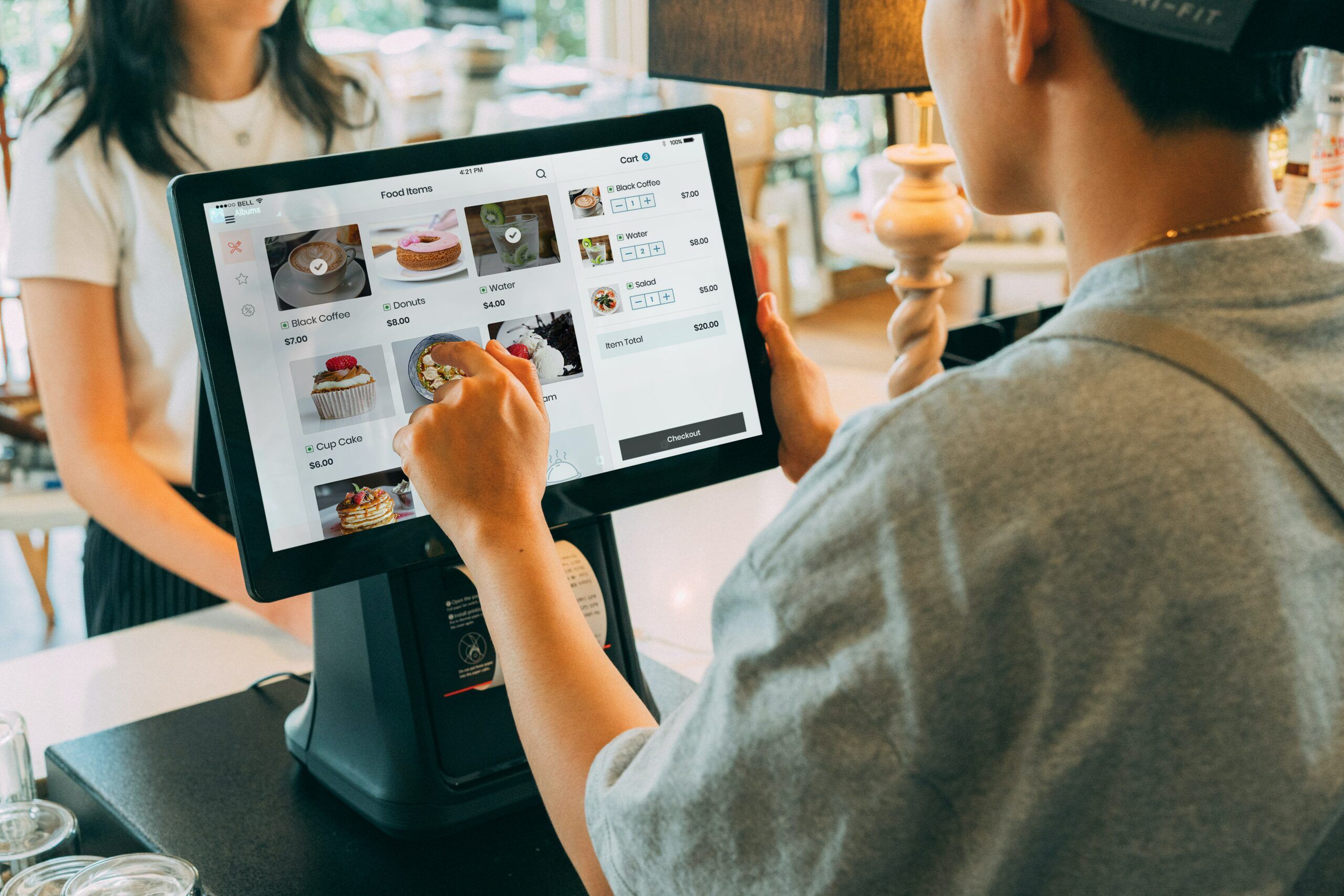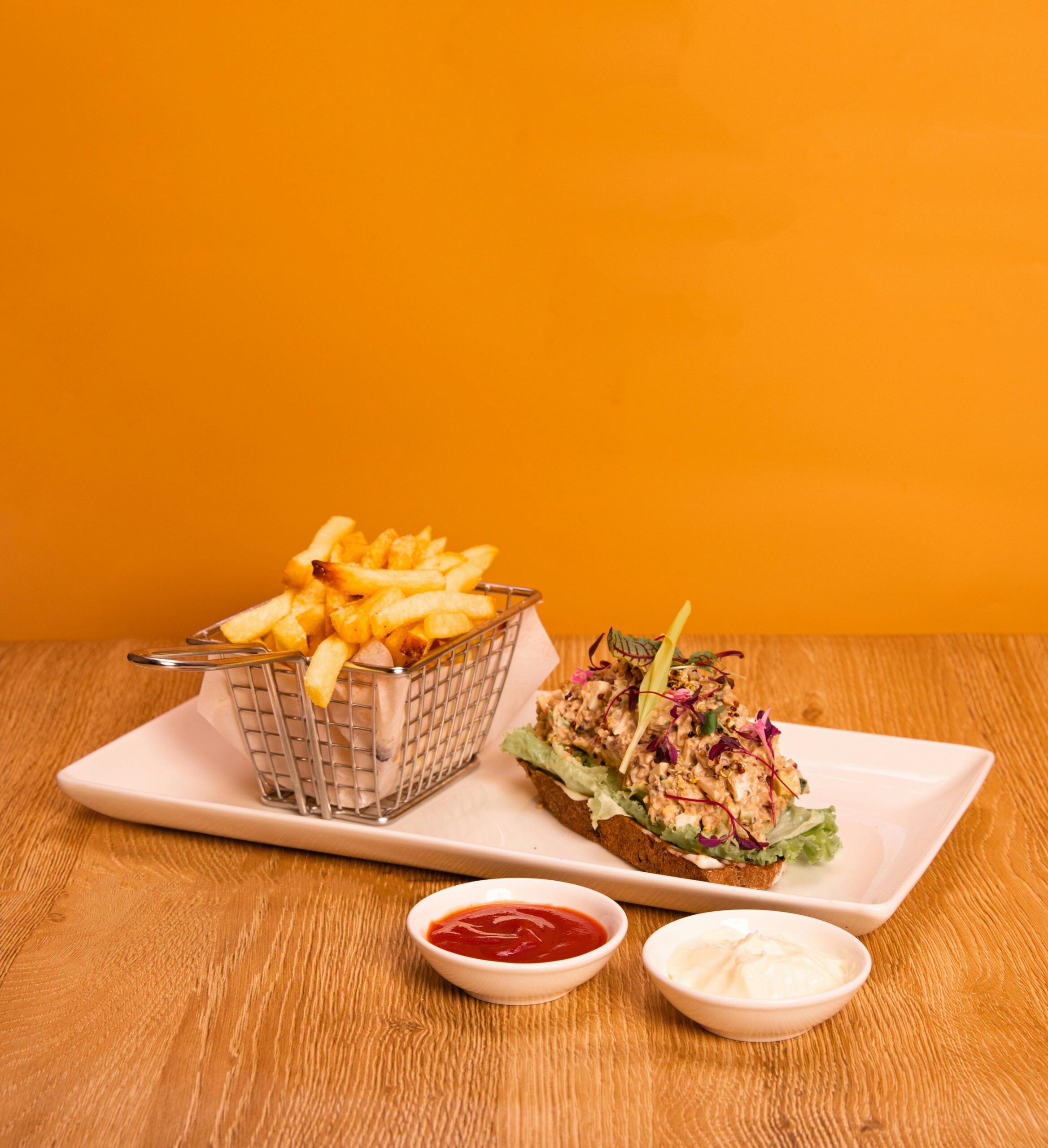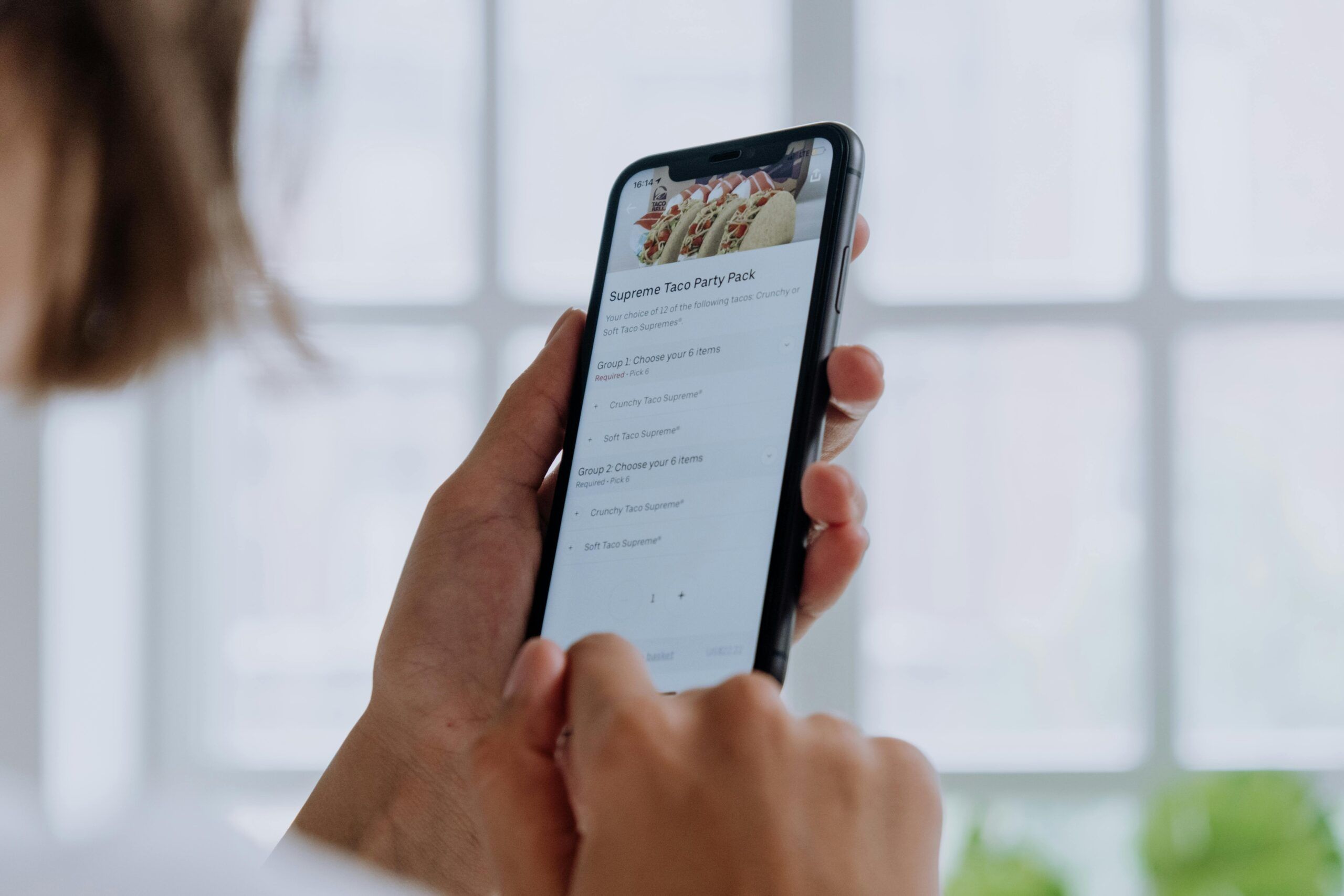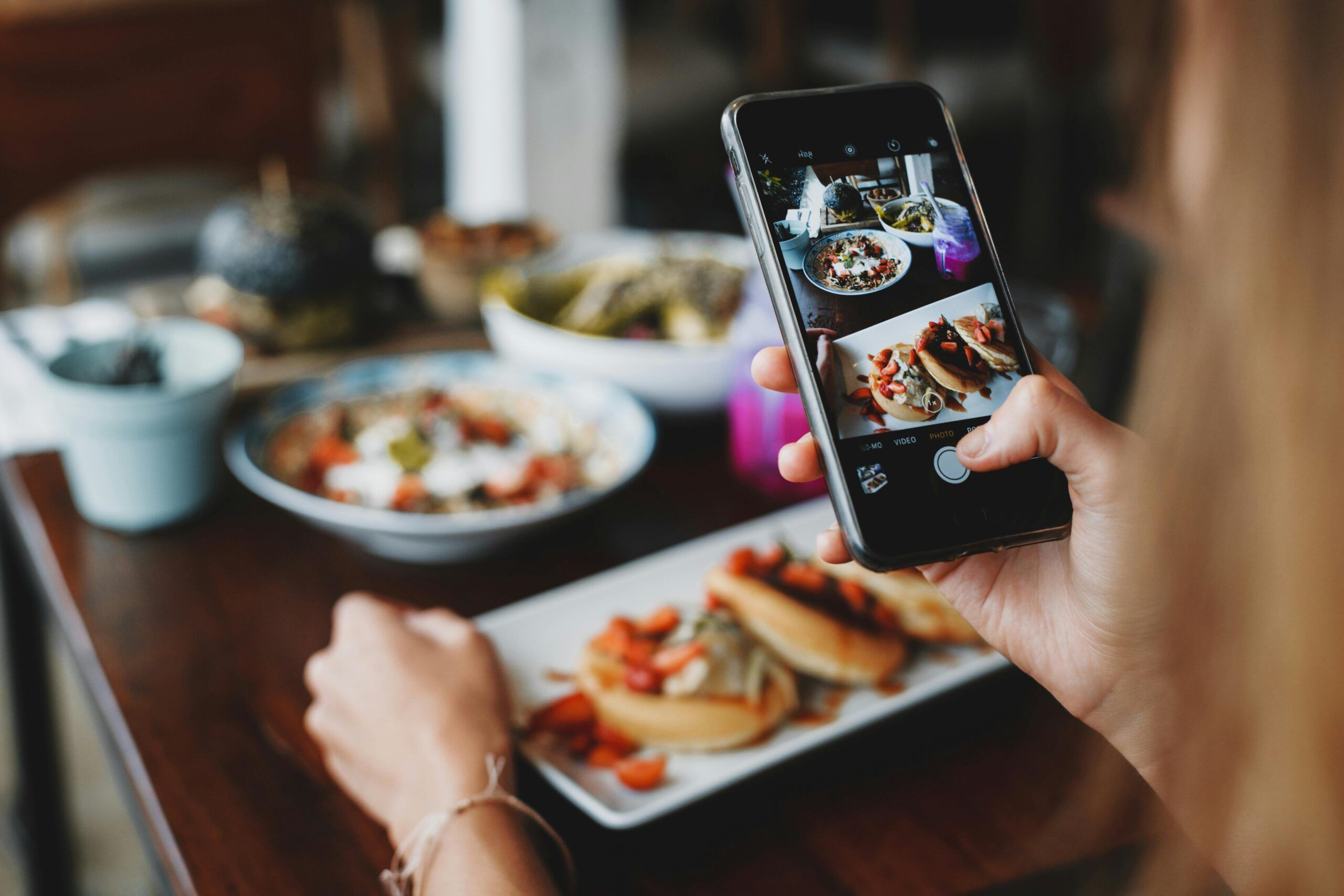- Integration Of AI And Machine Learning
- Advancements In Robotics
- Smart Kitchens
- Enhanced Mobile And Online Ordering Systems
- Blockchain For Transparency
- Virtual And Augmented Reality
- Interactive Tabletops
- Food As Medicine
- Sensory Dining Experiences
- Keep Up With Top Restaurant Trends With A Reliable Partner
- FAQ
Ever wondered what the future holds for dining out? From the kitchen to the customer’s table, technological advancements are streamlining operations and enhancing dining experiences in profound ways.
Here at Orders.co, we’re just as excited about what’s next in restaurant technology as you are about serving that next customer.
Let’s dive into how the latest tech can supercharge your restaurant’s efficiency and make every guest’s experience memorable.
Whether you’re curious about the power of AI in your kitchen or the benefits of going mobile with your orders, we’ve got the insights that could transform your business.
Get ready because we’re about to unpack the top restaurant trends that are reshaping our industry today and beyond.
Key Takeaways
- Use AI and robotics to speed up service and make your kitchen more efficient.
- Smart kitchen tools can help keep food quality high and simplify cooking tasks.
- Set up online ordering to make it easier for customers to interact with your restaurant and boost sales.
- Use blockchain to keep your supply chain clear and build trust with your customers.
- Bring in virtual and augmented reality to give customers unique dining experiences.
- Add interactive tables and energy-saving tech to draw in those who prefer eco-friendly dining.
- Include healthy options on your menu to attract health-focused diners and create dining experiences that stimulate all the senses to make visits unforgettable.
Integration Of AI And Machine Learning
Let’s dive into how artificial intelligence (AI) and machine learning (ML) revolutionize the restaurant industry.
Today, AI powers everything from chatbots for seamless booking and customer service to algorithms that predict customer preferences and order top restaurant trends.
Looking ahead, AI is poised to elevate customer service with smarter chatbots that offer tailored meal suggestions.
It will streamline inventory management by predicting exact stock needs and refining marketing strategies with personalized customer promotions.
Advancements In Robotics
Robotics in the restaurant industry is no longer futuristic—it’s here, enhancing how we prepare, cook, and deliver food. Robotic systems streamline kitchen operations, ensuring consistency and speed with tasks like cooking and meal assembly.
These automated helpers are redefining efficiency in kitchens across the globe.
In the Front of the House:
- Robotic Servers: Robots that can greet and serve guests, adding a futuristic touch to the dining experience.
- Interactive Kiosks: Robots that handle orders, making the process interactive and engaging for customers.
Thinking about integrating robotics into your restaurant? Start by evaluating which areas would benefit most from automation. Here’s how to begin:
- Assess Needs: Identify operational areas that need efficiency improvements.
- Cost vs. ROI: Weigh the initial investment against potential savings and increased revenue.
- Customer Reception: Consider how your guests might react to robotic interactions.
Initiate with one or two robots that can immediately improve operational efficiency or customer experience. Plan a gradual integration to give your staff and patrons time to adjust to the new technology.
This careful approach ensures a smooth transition and maximizes the benefits of robotics in your restaurant.
Your Inbox, Your Rules!
Tailor your newsletter with the topics you're most interested in.
Smart Kitchens
The rise of smart kitchen technology marks a significant leap towards more connected and efficient restaurant operations. IoT-enabled appliances and systems are now at the forefront, revolutionizing how kitchens function:
- IoT-Enabled Appliances: Devices like smart ovens, refrigerators, and inventory systems are interconnected, providing real-time data that helps streamline kitchen operations.
- Efficiency Gains: These technologies automate routine tasks, minimize errors, and ensure consistency, allowing staff to focus on creating exceptional culinary experiences.
- Waste Reduction: Smart appliances can monitor food usage and storage conditions, significantly reducing waste and optimizing stock levels.
By integrating smart kitchen technologies, restaurants can improve operational efficiency and better food quality and sustainability, ensuring they remain competitive in the fast-evolving restaurant industry.
Enhanced Mobile And Online Ordering Systems
The evolution of mobile and online ordering systems has drastically reshaped the restaurant industry, making digital customer engagement more crucial than ever.
47% of diners are eager to see more exclusive offers and discounts on mobile apps and websites.
These platforms have become sophisticated, featuring predictive ordering that anticipates customer preferences, direct integration with social media allowing orders straight from a user’s profile, and options for real-time meal customization, upgrading customer satisfaction and interaction.
According to the National Restaurant Association, over half (52%) of US consumers see ordering delivery and takeout from restaurants as a crucial part of their lifestyle. This sentiment is even stronger among Millennials (67%) and Gen Zers (63%).
Strategies for Customer Engagement
- Loyalty Reward Programs: Integrate loyalty rewards into ordering systems to encourage repeat business.
- Personalized Marketing: Use customer data from these systems to send targeted offers and promotions.
- Feedback Mechanisms: Incorporate options for customers to leave feedback through the app, providing valuable insights and improving service quality.
At Orders.co, we recognize the critical role of efficient mobile and online ordering systems in modern restaurants. Our platform is equipped with robust features that drive customer engagement. We enable restaurants to easily set up and manage loyalty programs, rewarding repeat customers and encouraging them to return.
Our Guest Feedback Monitoring feature helps you stay on top of customer sentiment by pushing positive feedback to public platforms while offering quick action tools for addressing negative feedback. This ensures you can protect your reputation and turn potential issues into opportunities to improve customer satisfaction.
Request a Quick Demo to see how our features can ease your daily operations and boost sales!
Blockchain For Transparency
Blockchain technology is revolutionizing transparency within the restaurant industry’s supply chain. It provides immutable record-keeping that offers a verifiable and secure method to track the journey of ingredients from farm to table. This level of transparency boosts consumer trust and improves food safety by precisely tracking food sources and handling history.
Implementing Blockchain:
- Partner with Tech Providers: Collaborate with companies specializing in blockchain for supply chains to ensure smooth integration.
- Educate and Inform: Actively inform your staff and patrons about the benefits of blockchain, fostering acceptance and understanding.
Adopting blockchain allows restaurants to demonstrate their commitment to transparency and safety, helping them stand out in a competitive market by reinforcing consumer confidence and compliance with safety standards.
Also, read:
- 5 Ways to Create a More Sustainable Restaurant Business Model
- The Best Restaurant Customer Service Strategies: Expert Tips and Tricks
- The Rise of Plant-Based Menus: How to Incorporate Vegan Options in Your Restaurant
- The Surprising Connection Between Music and Dining: How to Choose the Perfect Playlist for Your Restaurant
- The Power of Personalization: How to Customize the Restaurant Experience for Every Customer
Virtual And Augmented Reality
The integration of Virtual Reality (VR) and Augmented Reality (AR) into the restaurant experience offers unique opportunities for enhancing customer engagement.
VR can transport diners to virtual settings that elevate the thematic ambiance of a meal, while AR can overlay digital information onto the physical dining environment, enriching interactions with the menu and the space.
Applications of VR and AR:
- Immersive Marketing: Employ VR to create captivating advertising content that transports potential customers on a virtual tour of your restaurant.
- Interactive Training: Utilize AR to provide interactive training experiences for staff, helping them learn menu details and service protocols in a more engaging way.
When adopting these technologies, it’s advisable to start with small-scale pilot projects to gauge customer reactions and refine the approach. Ensuring that the technology supports rather than detracts from the dining experience is crucial.
These innovative tools make dining more interactive and enjoyable and serve as effective instruments for marketing and staff training, thereby enhancing the overall efficiency and appeal of restaurants in the digital age.
Sustainable Technology In Restaurants
Sustainability is becoming a cornerstone of the restaurant industry, driven by consumer demand for environmentally friendly practices.
Technology is crucial in this transition, featuring the use of high-efficiency appliances that lower energy use and operational costs. Additionally, advanced water-saving systems help manage usage, while waste management solutions like composting machines and digesters enhance waste handling efficiency.
Implementing Green Technologies
- Audit Your Usage: Conduct an energy and water use audit to identify potential savings.
- Invest in Smart Tech: Choose appliances and systems with proven efficiency gains.
- Educate Your Team: Ensure all staff are trained on the operational changes and the importance of sustainability practices.
Interactive Tabletops
Interactive tabletops are transforming dining experiences by enabling guests to order food, call for service, and entertain themselves directly from their table.
This technology integrates seamlessly into the dining environment, providing a futuristic touch that can differentiate a restaurant from its competitors.
Interactive Features:
- Direct Ordering and Service Calls: Simplifies the ordering process and improves service efficiency.
- Entertainment Options: Offers games and interactive content to keep diners engaged while they wait.
Implementation Steps:
- Select Appropriate Software: Partner with technology providers who specialize in interactive restaurant solutions.
- Staff Training: Train staff thoroughly so they can assist customers in using the new technology effectively.
Food As Medicine
With a rising trend towards health and wellness, restaurants are now offering menus designed around functional foods known for their health benefits.
This approach caters to a growing segment of health-conscious consumers who are interested in foods that help meet their specific health objectives.
Source: Statista
Focus Areas:
- Menu Development: Incorporate ingredients known for health benefits, like antioxidants, probiotics, and anti-inflammatory properties.
- Educational Marketing: Inform customers about the health benefits of menu items to help them make informed choices.
Steps to Integrate:
- Collaborate with Nutrition Experts: Work with dietitians to develop dishes that are both healthy and flavorful.
- Transparent Labeling: Clearly label dishes with their health benefits to aid customers in making decisions that align with their health goals.
Offering a menu with functional foods meets the demand for healthier dining options and upgrades a restaurant’s reputation as a forward-thinking, health-oriented establishment.
Sensory Dining Experiences
Sensory dining experiences aim to engage all the senses, not just taste. This trend involves creating a dining atmosphere where lighting, music, and aromas are all carefully curated to complement the culinary experience.
Components of Sensory Dining:
- Themed Ambiance: Use lighting and decor to create an immersive environment.
- Aromatic Enhancements: Introduce scent diffusers to strengthen the flavor perception of dishes.
Getting Started:
- Design the Experience: Plan how each sensory element will interact to elevate the dining experience.
- Feedback and Iteration: Gather customer feedback to refine and improve the sensory elements continuously.
Restaurants offering sensory dining experiences can attract a broad audience looking for unique and memorable dining events, setting themselves apart in a crowded market.
Keep Up With Top Restaurant Trends With A Reliable Partner
As we delve into the transformative power of top restaurant trends, it’s evident that tools like AI, robotics, smart kitchens, and advanced ordering systems are shaping the future of the dining experience.
These innovations streamline operations and redefine customer interaction, setting a new standard for the restaurant industry.
At Orders.co, we’re dedicated to ensuring your restaurant thrives amidst these top restaurant trends with a suite of comprehensive features:
Direct Ordering Website with Mobile Optimization
Deliver the same level of convenience as popular delivery apps—without the hefty commissions. With our custom ordering website, customers enjoy a fast, seamless experience optimized for any device, while you keep more of your earnings.
From secure transactions to easy navigation, your website offers customers all the perks they love—plus exclusive benefits you control. Whether they’re ordering on the go or at home, it’s the perfect way to convert casual browsers into loyal customers.
Menu Management
Utilize Orders.co’s advanced menu management system to keep your offerings fresh and exciting. Easily update and maintain your menu with our user-friendly dashboard that allows you to adjust item descriptions, prices, and promotions.
This feature ensures that your customers always have access to your latest dishes and deals, enhancing engagement across both your own and third-party platforms.
AI-Powered Marketing Solutions
Leverage our AI-driven restaurant marketing tools to automate and optimize your restaurant’s marketing efforts. Easily create targeted SMS and email campaigns that cater to the preferences of your customer base, all without needing extensive marketing expertise. This efficient approach not only increases orders but also boosts customer retention by delivering personalized interactions.
Loyalty Reward Program
With Orders.co, setting up a restaurant loyalty rewards program is straightforward. Encourage repeat business with points and discounts while our automated mobile loyalty program drives customer engagement and facilitates the management of rewards, ensuring your loyal patrons are frequently recognized and rewarded.
Local SEO Optimization
Increase your restaurant’s visibility with Orders.co’s local business optimization tools. Our comprehensive approach includes effective management of your Google My Business profile and ensures your presence in relevant local directories.
This strategic placement increases your visibility in local search results, attracting more customers by making your restaurant easily discoverable and prominent in area-specific searches.
Embrace the future of dining with Orders.co and discover how our technologies can transform your restaurant into a more efficient, engaging, and customer-focused enterprise.
Schedule a free demo today and start exploring the benefits of integrating these advanced tools into your business strategy!
FAQ
1. How can small to mid-sized restaurants keep up with the latest trends in the restaurant industry without significant investment?
Small to mid-sized restaurants can strategically adopt new technologies by prioritizing those that offer the best return on investment. Starting with cost-effective solutions, such as enhancing their online presence or utilizing basic AI tools for customer interaction, can help them stay competitive.
2. What are some emerging food service trends that could impact restaurant workflows?
Emerging food service trends like meal kits, subscription-based dining, and increased demand for health-conscious menu options are reshaping how restaurants plan their service workflows. Incorporating these trends may involve revising menu planning, adjusting inventory management practices, and retraining staff to meet new customer expectations.
3. In the context of the latest trends in the restaurant industry, how important is sustainability going forward?
Sustainability is becoming increasingly crucial as consumers become more environmentally conscious. Restaurants that integrate sustainable practices, such as sourcing locally grown ingredients or reducing waste through technology, not only appeal to this growing demographic but also often find they can reduce operational costs.
4. How might the latest trends in the restaurant industry influence menu design and customer experience in the next decade?
As personalization and health-focused dining continue to rise in popularity, menus will likely become more adaptable, with options for customization based on dietary preferences. Additionally, technology such as AR and VR could transform the customer experience by offering interactive menu features or virtual dining environments.



